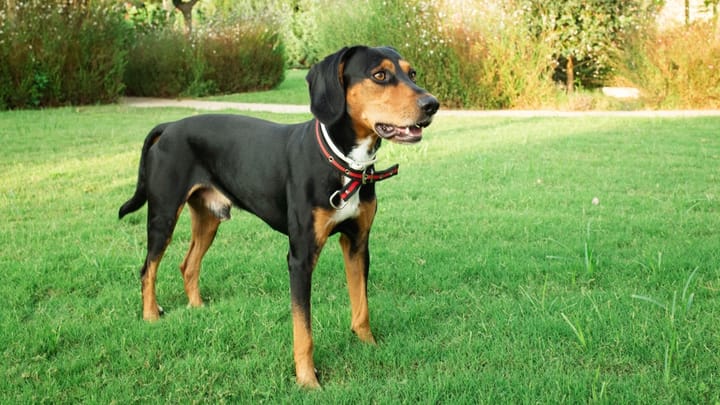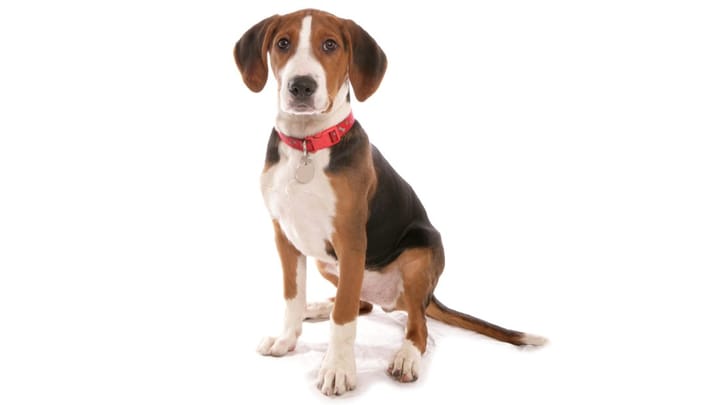Hamiltonstövare
Other names : Hamilton Hound, Swedish Foxhound


The dog with the gentlemanly name is a lighter and altogether more Scandinavian variation on the English Foxhound. Friendly, charming, and hard-working, as his James-Bond-parody of a breed-name might suggest, this chap is a strong and handsome take on the scenthound, and can be as free-willed as he is sociable. In contrast to his scenthound cousins, the Hamilton Hound has pretty keen hunting eyes in addition to that well-developed nose. If you can handle his often-independent behaviour, you’ll find this chap to be a warm and low-maintenance addition to the household.
|
Life expectancy |
The Hamiltonstövare has a life expectancy of between 11 and 13 years |
|
Temperament |
|
|
Size |
Medium
|
|
Adult size |
Female
Between 19 and 22 in
Male
Between 21 and 24 in
|
|
Adult weight |
Female
Between 51 and 60 lb
Male
Between 51 and 60 lb
|
|
Coat colour
|
Black White Brown |
|
Type of coat
|
Short |
|
Eye colour
|
Brown
|
|
Purchase price |
The Hamiltonstövare costs approximately 950£ |
You cannot hunt deer with this dog. Lust for deer hunting has been selectively bred out of the Hamilton Hound.
More details about the Hamiltonstövare
Hamiltonstövare: Origins and history
This Swedish dog was created by, and takes his name from, Count Adolf Patrick Hamilton; it’s only a pity they didn’t call the breed the Count Adolf Patrick Hamilton Hound. The Count stuck together five disparate breeds in the late eighteenth century – the English Foxhound, Harrier, Curlandish Hound, Holsteiner Hound, and Heiderbracke – and this is what he got. The first official Hamilton Hounds were named Pang and Stella and not, sadly, Neil and Christine.
Physical characteristics of the Hamiltonstövare
This veritable child’s drawing of a dog is smartly rectangular in shape but boasts a joyful patchwork of tricolour fur. His muzzle is long and segues elegantly into his arched and modestly-sized head. His ears are long, flappy napkins, his neck and shoulders powerful and no-nonsense. The Hamilton Hound’s chest is deep and his belly barely betrays its straight line, leading back to a tail held aloft and curved like a sabre.
FCI classification of the Hamiltonstövare
-
Group 6 - Scent hounds and related breeds
-
Section 1 : Scent hounds
Hamiltonstövare: Characteristics
Hamiltonstövare: Behaviour
Training a Hamiltonstövare
Although he can prove stubborn towards his teacher, the Hamilton Hound is eager to learn and can even progress to be a service dog if given the right start in life.
Hamiltonstövare: Lifestyle
Breed compatibility Hamiltonstövare
Hamiltonstövare: Purchase price
£950 for KC Registered dogs.
Looking after a dog of this size typically costs between £100 to £170 a month, including food, medical/insurance, and incidental expenses.
Hamiltonstövare: Shedding
Average
He sheds moderately twice a year when the temperature turns.
Hamiltonstövare: Grooming
This is a low-maintenance dog. Regular but not excessive brushing, nail-clipping, and dental hygiene are all that’s required.
Hamiltonstövare: Health
The Hamitonstövare's lifespan is approximately 12 years.
This is a sturdy outdoor dog.
He shouldn’t be overworked during a heat wave.
This dog’s coat is well adapted to cold weather.
His high energy and daily activities should keep him in shape.
- Hip/elbow dysplasia
- Allergies
- Epilepsy
- Ear infections


